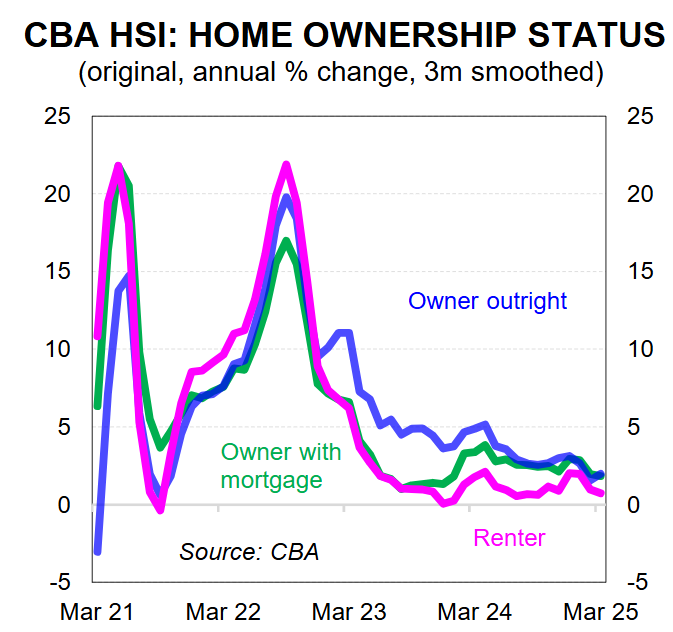The latest rental affordability report from PropTrack revealed that at the end of 2024, Australian households could afford to rent the smallest share of advertised rentals since at least 2008, when records began.
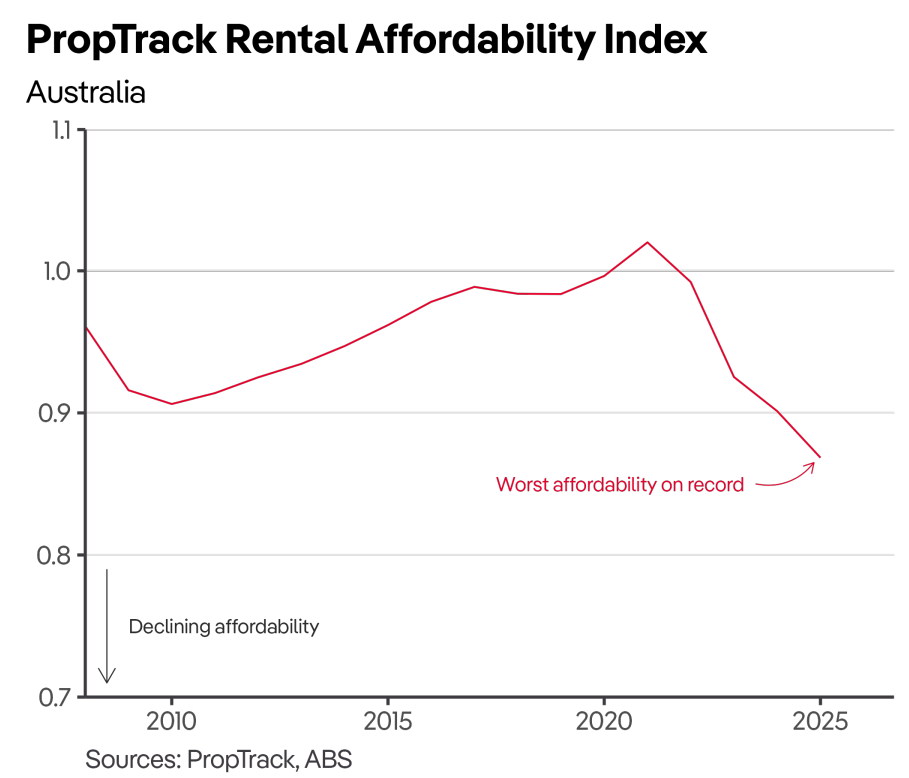
The primary cause of the collapse in rental affordability is the extreme growth of rents, which have risen by 48% nationally since the pandemic’s start.
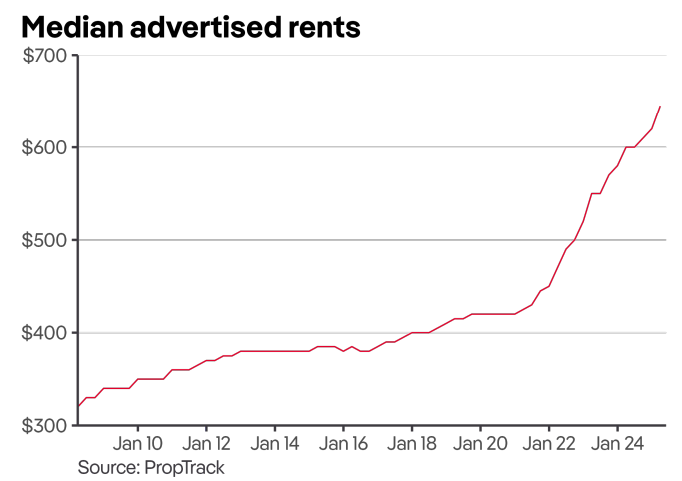
Over the same period, median incomes only grew by 19%, according to PropTrack.
Separate analysis from CoreLogic showed that the percentage of gross annual household income needed to pay the median national rent was a record high 32.9% at the end of 2024.
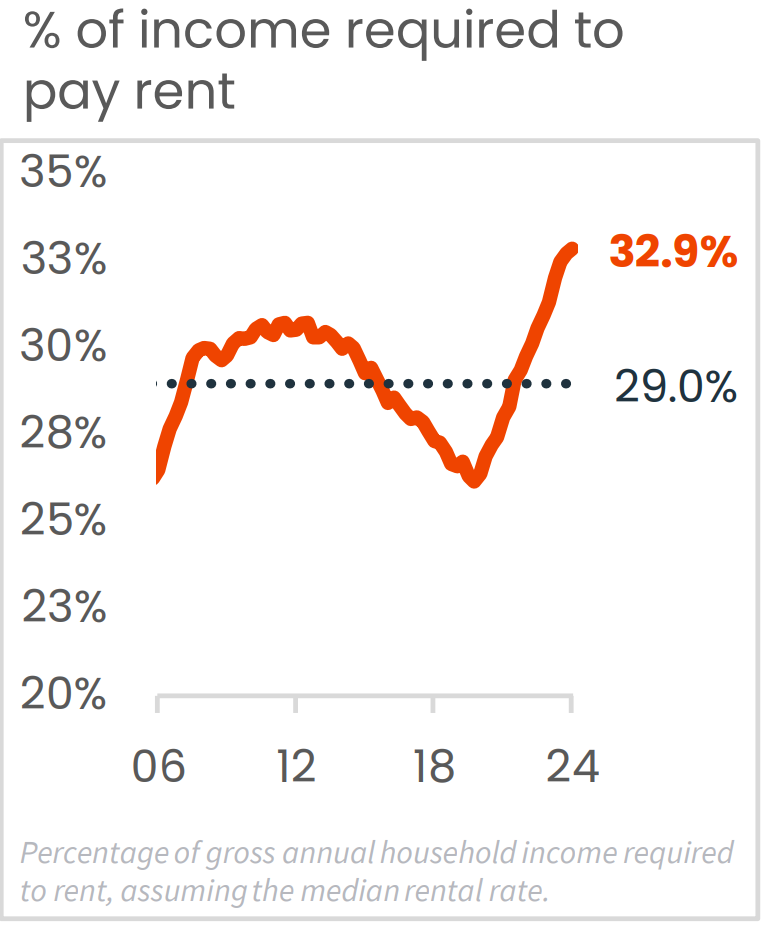
Source: CoreLogic
Senior economist Belinda Allen published results from CBA’s household spending indicator, which showed a growing gap between the fortunes of landlords and tenants.
As illustrated in the following chart, rent income was the strongest source of income growth in the year to Q1 2025, rising by more than 7%. This is excellent news for landlords.
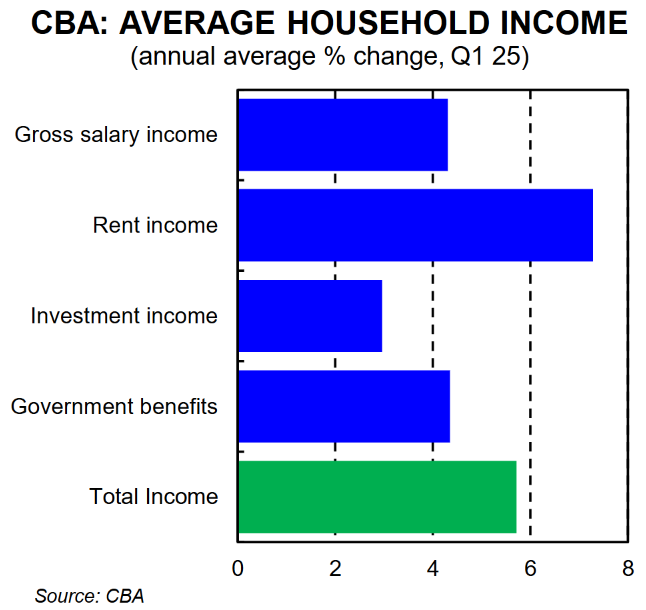
On the flipside, rents were also one of the fastest-growing areas of household expenditures, rising by 8%. This is dire news for tenants.
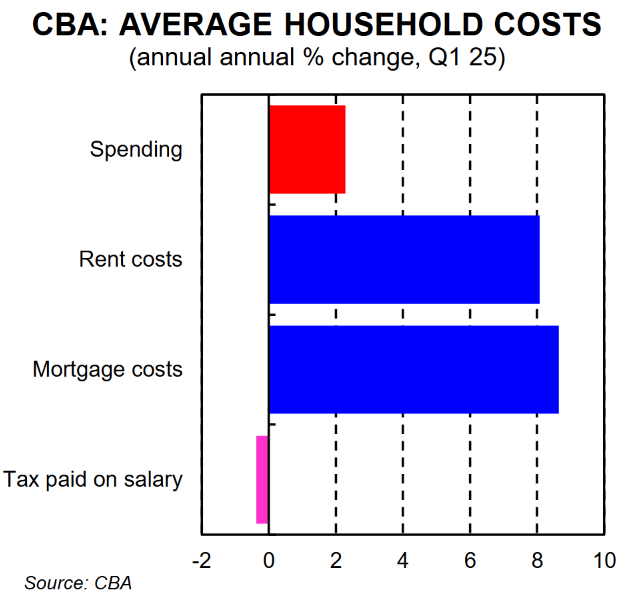
Mortgage payments also rose by just over 8% in the year to Q1 2025.
CBA shows that average rental costs have surged by around 40% since the pandemic’s beginning, whereas average mortgage costs have risen by more than 60%.
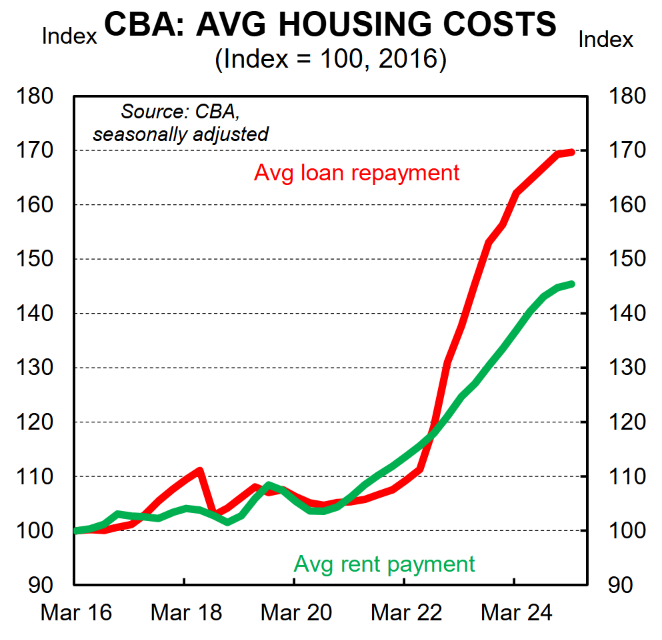
The rising housing costs help explain why expenditure growth has been lower for renters and mortgage holders than for those who own their homes outright.
